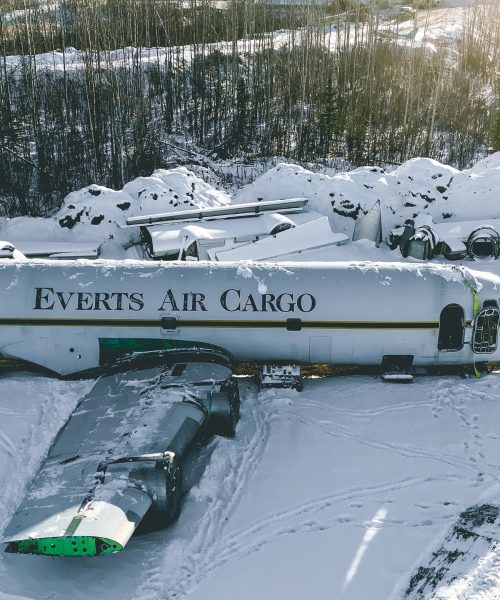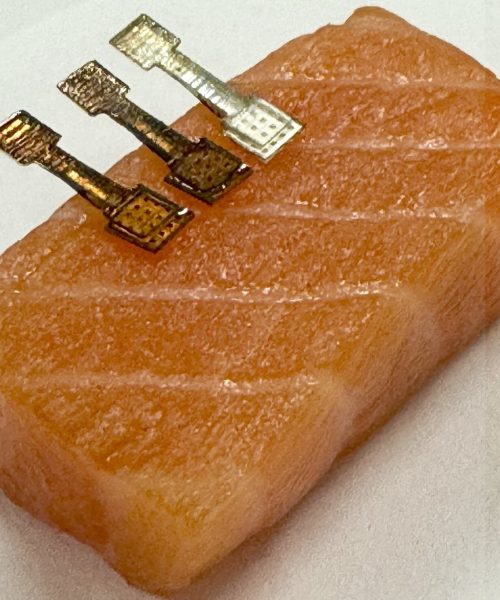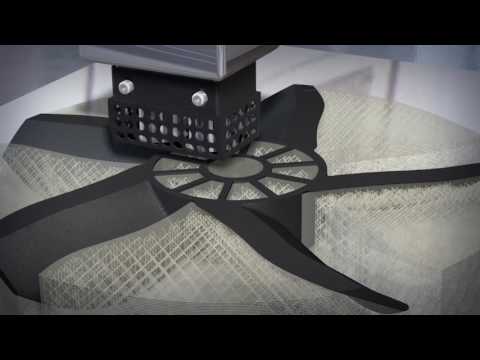3D printers have come a long way since the days of producing flimsy plastic lamps and cheap toys. More than 40 years after the first 3D-printed object, advanced machines are now capable of creating biodegradable kitchenware, artificial animal skin, and even entire ready-made homes constructed from dirt. Now, a pair of college graduates have teamed up to pursue an even more ambitious goal: printing water out of thin air.
FH Münster University of Applied Sciences graduates Louisa Graupe and Julika Schwarz have designed a 3D-printed prototype device aptly named Water from Air. They claim the device can produce up to 1.6 gallons of clean drinking water per day using nothing but air. Made primarily from 3D-printed materials, the device draws moisture from the atmosphere, traps water molecules, and then condenses them into drinkable water. Built-in “metal-organic frameworks” remove most air pollutants, potentially eliminating the need for the water to pass through an additional filter. A built-in spigot at the bottom of the device allows the collected water to be poured directly into a drinking cup or another storage container.
Though still a work in progress, the engineers believe the device could provide a smaller, more practical solution for individual households experiencing water scarcity. Writing on the design site Behance, they describe Water from Air as “a mobile water producer and storage unit that can be used flexibly in private households, regardless of geographical and social circumstances.” They describe the device as a potential “practical solution and application option for people all over the world.”
Water from Air could produce enough daily water for a family of four
In its current iteration, the device features several stackable sections, each produced using a 3D printer. The top part, which resembles a French press, opens up to draw in water molecules from the air. After about an hour, the hatch closes and the device begins to heat up, triggering the condensation process. According to the engineers, the built-in materials remove most, if not all, harmful air pollutants. The condensed water then drips down into a base at the bottom.
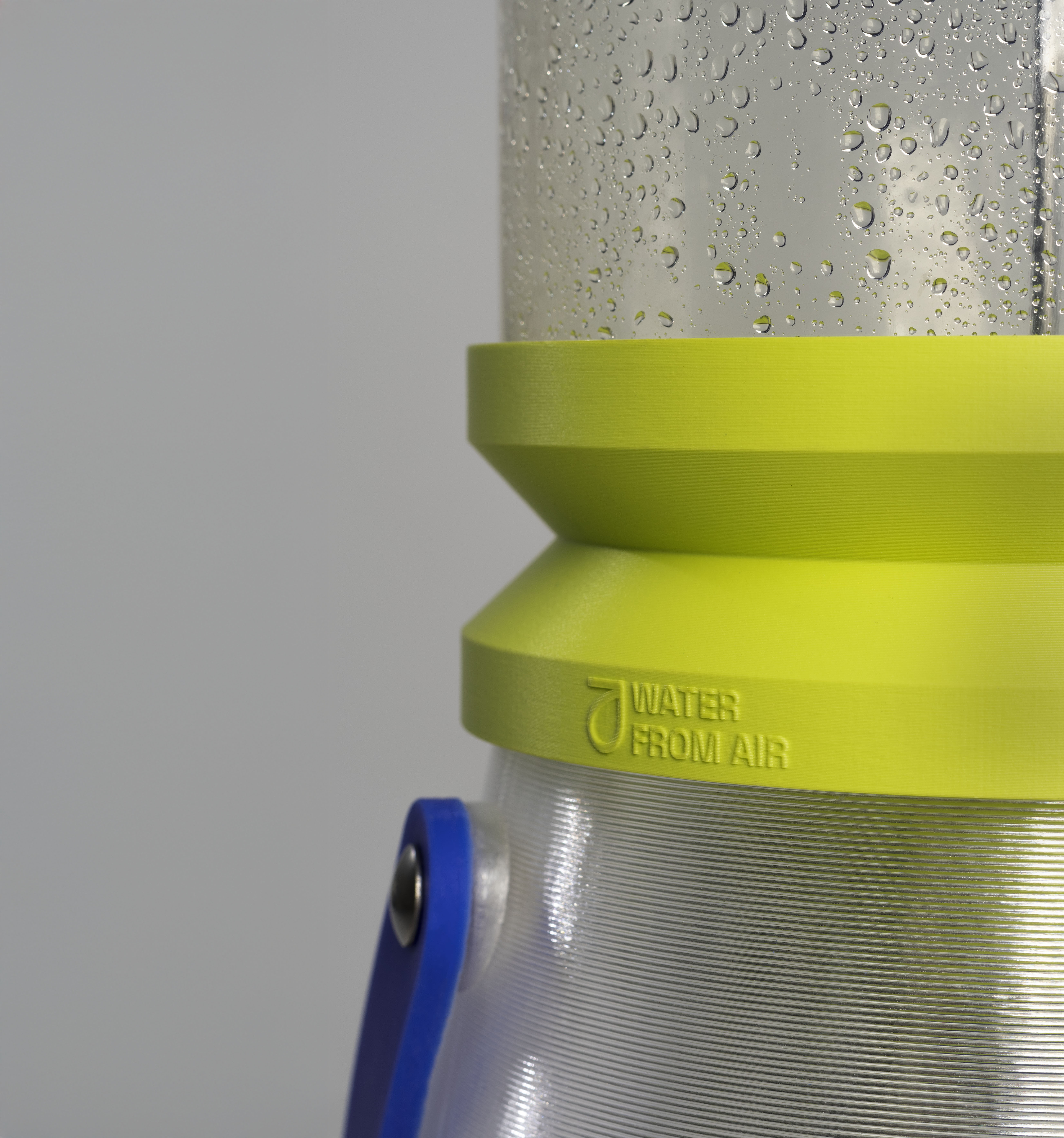
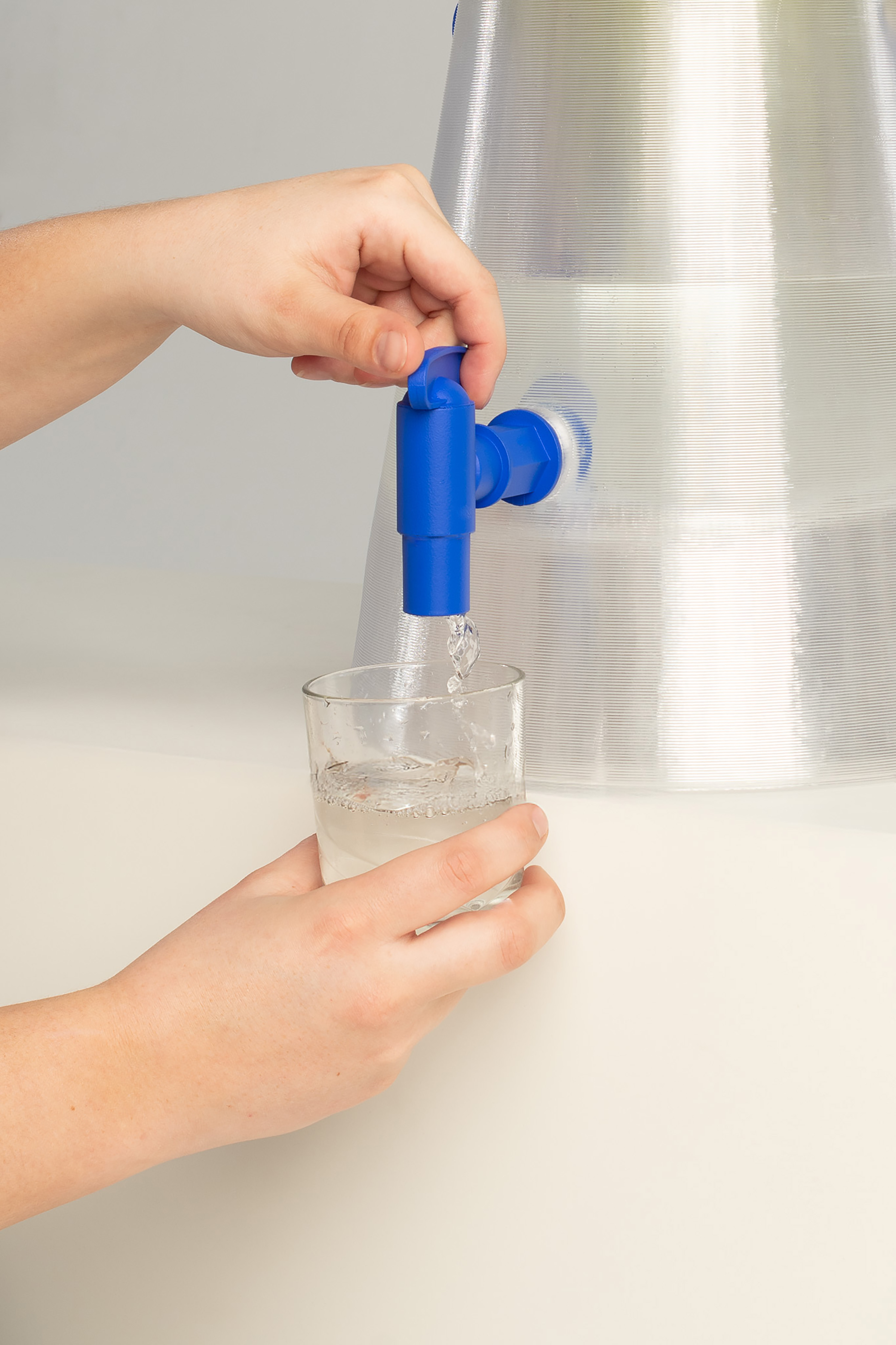
One full cycle takes approximately two hours and yields 17 fluid ounces (roughly the equivalent of a medium-sized plastic water bottle). If left to run continuously for a full day though, the device could produce around 1.6 gallons of drinking water, which the engineers say is enough to sustain a family of four, assuming each person consumes 1.5 liters of water daily.
It’s worth noting that the device, intriguing as it may sound, isn’t ready for widespread use. In response to comments on Behance, Schwarz clarified that the materials used in the device are still being researched and that the patenting process is ongoing. The engineers have not mentioned any pricing.
“Our goal was to illustrate the potential of this novel material through a user-friendly and self-sufficient product design—something that previously only existed in complex laboratory setups,” Schwarz writes.
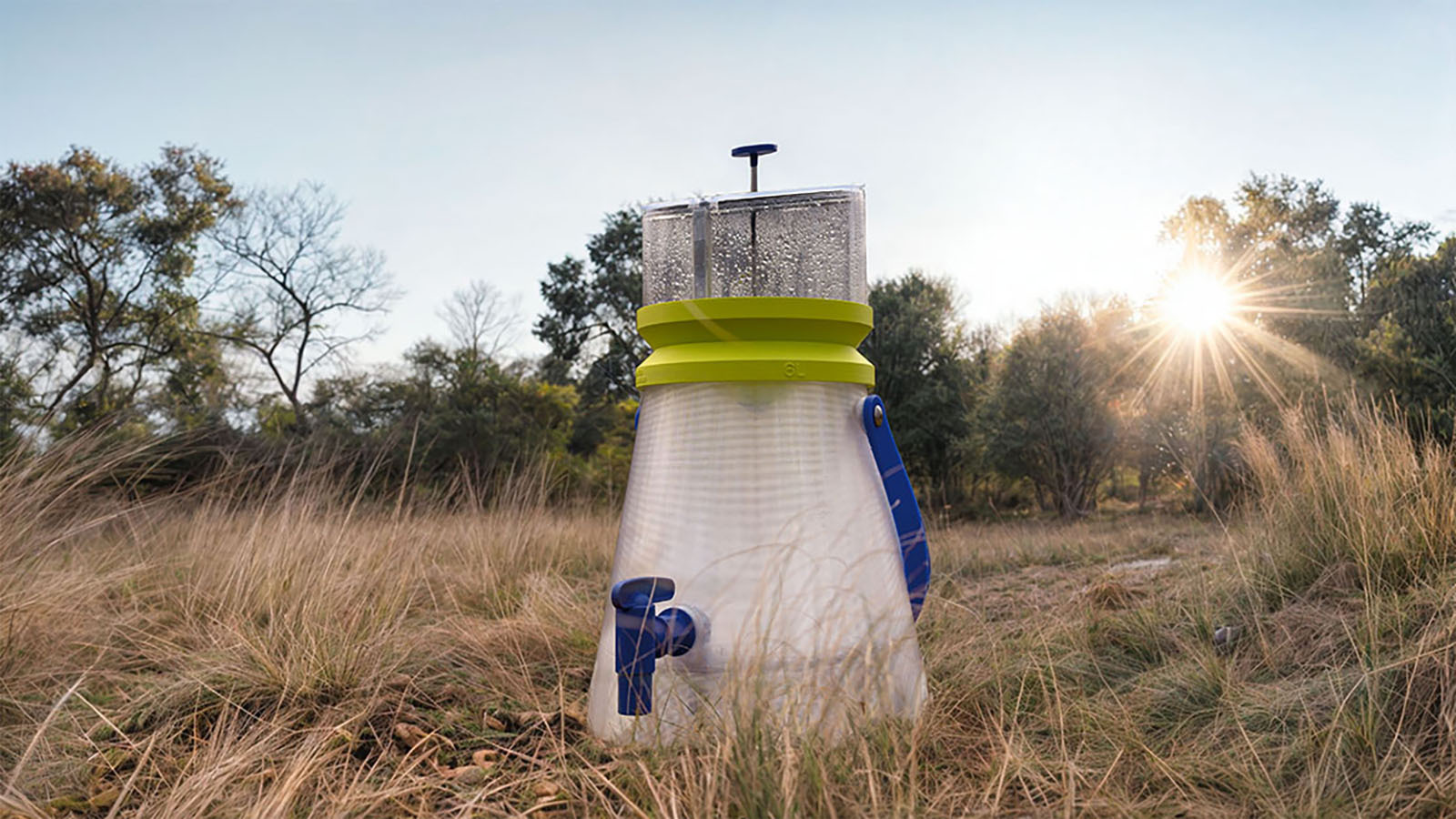
A portable solution for the world’s growing water scarcity
The engineers say that they were inspired to pursue the project after becoming aware of the growing issue of water insecurity worldwide. In the U.S., the Centers for Disease Control and Prevention estimates that roughly 2.2 million people live in homes without basic plumbing or running water. A recent paper by researchers at Arizona State University estimates that up to 12 percent of U.S. residents may be experiencing water insecurity. These effects are felt disproportionately by Latino, Black, and Indigenous communities across the country.
That’s noteworthy, but the issue becomes more apparent when zooming out to the global scale. The World Economic Forum estimates that around 72 percent of people worldwide experience some form of water insecurity. Around 8 percent of the global population falls into the more extreme category of facing “critical water insecurity.”
Current approaches to addressing water insecurity often rely on large, expensive, and technically complex systems for water conversion. The engineers note that these systems aren’t always well suited to the varying, individual needs of households. In theory at least, a household could use a Water from Air device during the day to collect the amount of water they need. The 3D-printing element also offers another advantage: because the design files are stored digitally, communities around the world could print their own devices locally, eliminating the need for a centralized distribution system.
“The basic idea of obtaining water for the air has great potential for the future, as the need for clean water sources is increasing,” Graupe and Schwarz write on Behance. “It is also conceivable in larger scenarios…to supply entire communities with water.”


